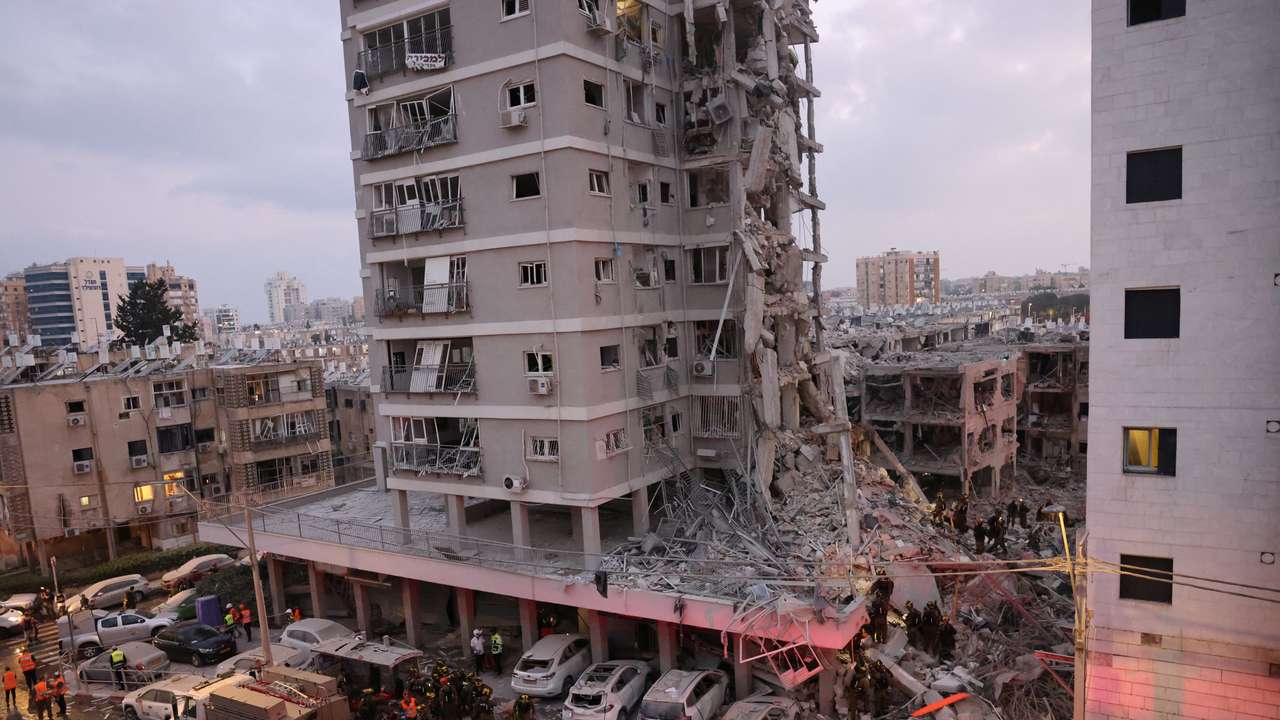Iran Roundup: Israel-Iran airstrikes, civilian casualities, European stock indexes

Trump says Israel and Iran ‘have to fight it out’
On Sunday, June 15, U.S. President Donald Trump stated that Israel and Iran may “have to fight it out” amid ongoing airstrikes between the two nations, but expressed hope that a deal could still be reached. Trump made the remarks before boarding Air Force One en route to the G7 Summit in Alberta, Canada. When asked about his efforts to de-escalate tensions. “I hope there’s going to be a deal. I think it’s time for a deal… but sometimes they have to fight it out,” he said. The statement followed an Israeli airstrike last week that targeted a nuclear facility and military sites in Iran, reportedly killing dozens. Israel said the operation was necessary to hinder Iran’s progress toward developing a nuclear weapon.
Israel’s strikes renew focus on Iran nuclear strike challenges
Israel’s recent airstrikes on Iranian military facilities, including nuclear sites, have revived concerns over the feasibility of dismantling Iran’s nuclear program. A March report from the Royal United Services Institute indicates that such an operation would require extensive firepower and U.S. assistance. Even then, penetrating Iran’s deeply buried enrichment sites would be difficult. The Natanz facility was targeted, but the depth of its underground infrastructure—estimated at around 8 meters—remains uncertain. The report concludes that military action should be considered only as a last resort due to operational and escalation risks.
Iranian missile strikes injure, trap Israeli civilians
Emergency teams in Israel are treating the wounded and rescuing individuals trapped in residential buildings following Iranian missile strikes on central and coastal areas, according to Israeli authorities. Two high-rise buildings in central Israel were hit, leaving people trapped in elevators, Israel Fire and Rescue reported. Footage from Reuters showed significant structural damage to an apartment block and emergency responders conducting search operations. Magen David Adom (MDA), Israel’s national emergency service, stated that it has transported 12 individuals to hospitals and is treating several for minor injuries. A 10-year-old boy is reported to be in serious condition.
IAEA confirms no external radiation after Natanz strike
The International Atomic Energy Agency (IAEA) reported Monday that there is potential for radiological and chemical contamination inside Iran’s Natanz nuclear enrichment facility following Israeli airstrikes. However, radiation levels outside the site remain normal. IAEA Director General Rafael Mariano Grossi stated that uranium poses a significant health risk if inhaled or ingested, but the danger can be mitigated with appropriate protective equipment. He emphasised that there is no radiological impact on the population or environment and noted that no further damage was observed at Natanz or the Isfahan nuclear site since Saturday. Grossi made the remarks during an emergency IAEA board session requested by Russia.
European markets open slightly higher amid Israel-Iran tensions
Major European stock indexes opened modestly higher on Monday. Oil prices remained elevated and volatile due to ongoing uncertainty surrounding the Israel-Iran conflict. Following Israel’s strike on Iranian nuclear and military sites, oil surged over 7% on Friday, reflecting Tehran’s role as a key global producer despite sanctions. Concerns about supply disruption have persisted but eased slightly early Monday. U.S. benchmark crude traded at $73.71 per barrel, while Brent crude stood at $74.00, down from Friday’s peak but still about 7% above pre-conflict levels.
This story is written and edited by the Global South World team, you can contact us here.